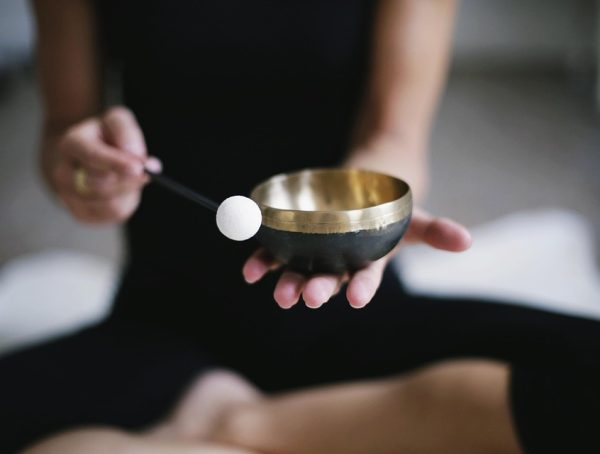How to Meditate for Mental Health: A Beginner’s Guide
In today’s fast-paced world, mental health is more critical than ever. Stress, anxiety, and depression have become commonplace, often overshadowing the joys of life. Fortunately, meditation offers a beacon of hope. It is a powerful practice that can help you cultivate a calmer mind, improve emotional resilience, and enhance overall well-being. If you’re interested in starting this journey, this beginner’s guide will walk you through the essentials of meditation for mental health, along with actionable steps to get you started.
Why Meditate?
Meditation has been practiced for thousands of years, and modern science is finally catching up to its benefits. Studies show that regular meditation can lower stress levels, improve focus and concentration, and promote emotional health. Here are some compelling reasons to start meditating for your mental health:
-
Reduces Stress: Meditating activates the body’s relaxation response, helping to alleviate physical tension and emotional stress.
-
Improves Emotional Well-being: Regular meditation can contribute to a more positive outlook and increased feelings of happiness and contentment.
-
Enhances Self-Awareness: It encourages self-reflection, increasing awareness of your thoughts, feelings, and behaviors.
-
Boosts Concentration: Meditation strengthens your ability to focus and enhances mental clarity.
- Promotes Mindfulness: It helps cultivate present-moment awareness, encouraging a more thoughtful and intentional approach to daily life.
Getting Started: Your Step-by-Step Guide
Step 1: Create Your Space
Action Step: Find a quiet, comfortable space in your home where you won’t be disturbed. This could be a corner of your living room, garden, or even a comfortable chair. You might want to light a candle or incense and add cushions or a blanket to make the space inviting.
Step 2: Choose Your Time
Action Step: Determine a time when you can consistently set aside for meditation. Whether it’s morning, midday, or evening, stick to the same time each day to make it a habit. Starting with just 5-10 minutes can be very effective. As you become more comfortable, you can gradually extend the duration.
Step 3: Find a Comfortable Position
Action Step: Sit or lie down in a comfortable position. You can sit cross-legged on the floor, on a chair with your feet flat, or lie on your back. Make sure your body feels relaxed. Keep your back straight, shoulders relaxed, and place your hands on your knees or in your lap.
Step 4: Focus on Your Breath
Action Step: Close your eyes gently and begin to focus on your breath. Notice how your chest rises and falls with each inhale and exhale. Try to breathe deeply from your diaphragm, which can help calm the body and mind. If your thoughts wander (which they will), gently bring your focus back to your breath without judgment.
Step 5: Use Guided Meditations
Action Step: As a beginner, you might find it helpful to use guided meditations. Apps like Headspace, Calm, and Insight Timer have excellent resources to get you started. Find a meditation that resonates with you and follow along.
Step 6: Be Mindful of Your Thoughts
Action Step: Remember that meditation is not about emptying your mind; it’s about observing your thoughts without attachment. When thoughts arise, acknowledge them, but don’t engage. Let them float away like clouds in the sky.
Step 7: End with Gratitude
Action Step: As you finish your session, take a moment to reflect on what you are grateful for. It could be anything from a supportive friend to the comfort of your home. Cultivating gratitude can enhance feelings of well-being and positivity.
Step 8: Make It a Habit
Action Step: To fully experience the benefits of meditation, consistency is key. Consider keeping a meditation journal where you log your experiences. Track your feelings before and after each session to observe growth over time.
Additional Techniques to Explore
As you grow more comfortable with meditation, consider incorporating additional techniques for greater depth:
- Mindfulness Meditation: Focus on being present in the moment, noticing the sights, sounds, and sensations without judgment.
- Loving-Kindness Meditation: Cultivate compassion towards yourself and others by repeating phrases of goodwill.
- Body Scan: A practice that involves mentally scanning your body for tension, encouraging release and relaxation.
Common Challenges and Solutions
-
Restlessness: It’s common to feel restless, especially as a beginner. Try shorter sessions and gradually increase your meditation time.
-
Distractions: Use earplugs or headphones to create a quieter environment. You can also play soft background music if it helps you concentrate.
- Doubt: Many newcomers worry they’re not doing it “right.” Remind yourself that meditation is a personal journey, and there’s no perfect way to meditate.
Conclusion
Meditation can be a transformative practice for mental health, fostering clarity, calmness, and emotional resilience. Whether it’s dedicating a few minutes each day to focus on your breath or using guided meditations to help deepen your practice, the key is to start small and build from there. Trust the process, and allow yourself the space to grow and connect with your inner self.
As you embark on this journey towards better mental health, remember: "The mind is everything. What you think you become." – Buddha.
For more inspiration and practical tips on health and well-being, follow Kevin on Instagram @KSteineman. Here’s to a healthier, happier you!
You might also like
More from Meditation
The Role of Mantras in Transcendental Meditation: A Deep Dive
The Role of Mantras in Transcendental Meditation: A Deep Dive Transcendental Meditation (TM) has garnered a significant following across the globe, …
The Science Behind Meditation: Improving Mental Health Naturally
The Science Behind Meditation: Improving Mental Health Naturally In today's fast-paced world, the pursuit of mental wellness has become paramount. Thousands …
Understanding the 7 Types of Meditation for Beginners
Understanding the 7 Types of Meditation for Beginners: A Path to Inner Peace Meditation has become a popular practice in recent …


































